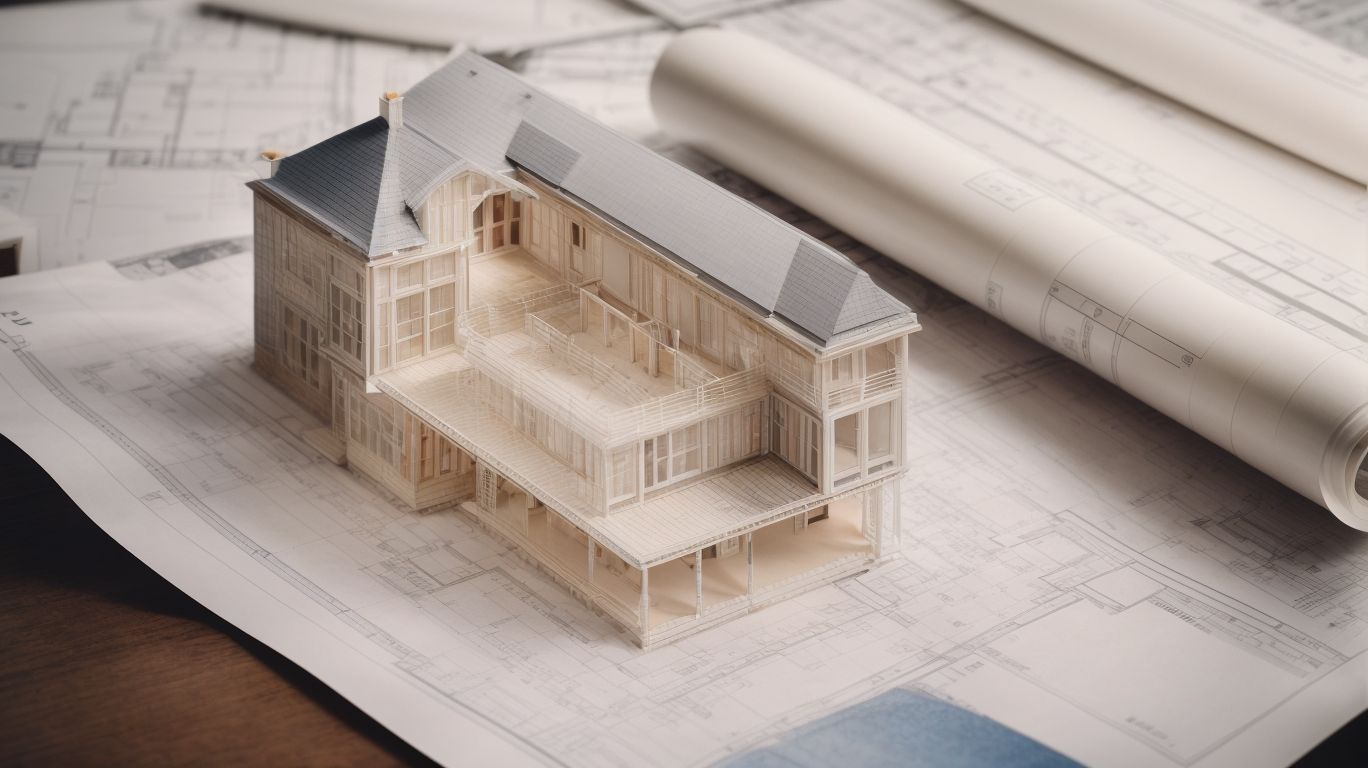
Navigating Structural Challenges in Home Remodels
When it comes to home remodeling, there are numerous structural challenges that homeowners may encounter. From load-bearing walls to outdated electrical systems and plumbing problems, it’s essential to be aware of these common issues and how to identify them.
In this article, we will discuss the steps you can take to address structural issues in your home remodel, including hiring a structural engineer and obtaining necessary permits. We will also explore ways to prevent these issues in future home remodels through regular maintenance and the use of quality materials.
Whether you’re planning a remodel or simply want to stay informed, this article will provide valuable insight into navigating structural challenges in home remodels.
What Are Structural Challenges in Home Remodels?
Navigating the structural challenges in home remodels involves addressing a diverse range of renovation obstacles and complexities inherent in the renovation process.
A successful remodel requires a thorough knowledge of local building codes to ensure compliance with regulations. Project management is essential in coordinating teams, timelines, and resources to keep the project on track and within budget.
The renovation process involves intricate details that require careful attention, such as accommodating design changes and addressing unforeseen structural issues that may arise.
What Are the Common Structural Issues in Home Remodels?
When undertaking home remodels, various common structural issues may arise, posing renovation risks and necessitating compliance with building codes.
Load-bearing Walls
The assessment and potential modification of load-bearing walls represent a critical aspect of the renovation process. This often entails structural modifications and presents specific renovation challenges.
When considering a home remodel, it’s essential to evaluate the load-bearing walls to ensure the structural integrity of the property. These walls play a vital role in supporting the weight of the structure, and any modifications must align with building codes and regulations.
Addressing load-bearing walls may involve creating additional supports or reconfiguring the layout to achieve the desired design. The challenges associated with these modifications require careful planning and expertise to seamlessly integrate the renovated spaces while maintaining the home’s stability and safety.
Outdated Electrical Systems
Dealing with outdated electrical systems during home remodels requires effective technology integration and innovative renovation solutions to ensure optimal functionality and safety.
Updating older electrical systems poses various challenges, such as limited capacity to handle modern appliances and gadgets, obsolete safety standards, and potential fire hazards.
Integrating smart home technologies and energy-efficient solutions can modernize the electrical infrastructure while enhancing convenience and reducing energy consumption.
Innovative renovation approaches, like rewiring and panel upgrades, are crucial to address these issues, ensuring that the home’s electrical system meets current demands and regulations without compromising on safety or performance.
Plumbing Problems
Addressing plumbing problems in home remodels necessitates efficient space utilization and clear contractual arrangements to ensure effective resolution within the renovation process.
This is crucial because plumbing issues can significantly impact the layout and functionality of the renovated space, affecting not only the aesthetics but also the overall comfort and convenience of the inhabitants.
By incorporating the necessary infrastructure and plumbing considerations into the remodeling plan, homeowners can prevent delays and costly adjustments down the line. Having well-defined contracts with the renovation team can provide clarity on responsibilities and expectations, streamlining the process and minimizing potential disputes during the project.
Foundation Issues
Dealing with foundation issues during home remodels often involves the intricate process of foundation repairs, influencing the overall renovation timeline and project management.
Foundation repairs can have a major impact on a home’s structural integrity, making it crucial for homeowners and contractors to address them effectively. These issues can also cause unexpected delays in the renovation process, requiring careful planning and coordination.
Additionally, the financial implications of foundation problems may affect the budget for other aspects of the remodel, making it important to prioritize these repairs early in the project timeline.
How Can You Identify Structural Issues in Your Home?
Identifying structural issues in your home requires a keen eye for potential renovation risks and a commitment to maintaining quality assurance throughout the inspection process.
Look for Cracks and Unevenness
To optimize readability and SEO, it’s advisable to break paragraphs into concise, easily digestible sentences. Add
tags to the text given and aim for a maximum of two sentences per
tag section, allowing multiple
tags. This approach enhances user experience and search engine indexing. Also, add tags to important keywords and phrases, and tags for quotes.
One way to identify potential structural issues in your home is to meticulously look for cracks and unevenness, often requiring thorough building inspections for comprehensive assessment.
Visual cues such as cracks can indicate underlying problems in a building’s structure. It’s important to note the location, size, and patterns of the cracks, as well as any unevenness, to assess the severity of the issues.
Professional building inspections offer a thorough analysis of the structural integrity, revealing hidden defects that may not be obvious. This proactive approach can save money on repairs and ensure the safety and stability of the property.
Check for Water Damage
Checking for water damage is essential in identifying potential structural issues, necessitating robust quality control measures and thorough renovation documentation for effective resolution.
This process ensures that any underlying problems are addressed promptly, preventing further complications. Effective quality control measures not only guarantee a meticulous restoration but also instill confidence in the renovation process.
Comprehensive renovation documentation serves as a valuable resource for future reference, streamlining communication and facilitating informed decision-making. By integrating these critical components, the renovation process becomes more efficient and the longevity of the structure is safeguarded.
Pay Attention to Strange Noises
Paying attention to strange noises within your home can be instrumental in recognizing potential structural issues. This necessitates efficient time management and effective project coordination for resolution.
This proactive approach allows for early detection of issues, minimizing the risk of further damage and costly repairs.
By promptly addressing these concerns, individuals can maintain the integrity and safety of their homes, fostering a more secure living environment.
The seamless integration of skilled professionals, such as contractors and inspectors, can streamline the process, facilitating a coordinated effort to assess and rectify any underlying problems.
Notice Changes in Doors and Windows
Noticing changes in the functionality of doors and windows can offer valuable clues to potential structural issues, often impacting decisions related to renovation financing and resource allocation.
These changes may indicate underlying problems such as foundation shifting, settling, or deterioration of structural components.
By paying attention to these signs, homeowners can address these issues early, potentially saving significant costs on repairs.
When seeking renovation financing, accurate identification of structural issues can influence the scope and budget of the project, ensuring that necessary resources are allocated to address these critical concerns.
What Are the Steps to Address Structural Issues in a Home Remodel?
Addressing structural issues in a home remodel involves a systematic approach encompassing proficient project management and clear renovation contracts to ensure effective resolution.
Hire a Structural Engineer
Engaging the services of a qualified structural engineer is a crucial initial step in addressing structural issues during a home remodel, ensuring adherence to quality assurance standards within the renovation process.
A structural engineer plays a pivotal role in assessing the integrity of the existing structure and providing expert input to ensure that any renovations or additions are structurally sound. Their expertise in analyzing the existing framework and creating design solutions that meet safety and building code requirements is invaluable.
By collaborating with architects and contractors, they help in creating a seamless and efficient process, while also mitigating the risk of potential structural failures in the future. Ultimately, their involvement guarantees a durable and safe outcome for the home remodel.
Obtain Necessary Permits
Securing the necessary permits is essential when addressing structural issues in a home remodel. This often involves compliance with permitting regulations and navigating renovation restrictions.
It is crucial to understand that obtaining permits ensures that the structural changes are in line with building codes and safety standards, improving the overall integrity of the property.
Securing permits allows for the identification and rectification of potential hazards, safeguarding occupants and preserving the property’s value. Compliance with regulations also helps to avoid costly penalties and legal issues, providing peace of mind throughout the renovation process.
Plan for Additional Time and Costs
When tackling structural issues in a home remodel, it’s important to plan for additional time and costs. This requires careful consideration of their impact on the overall renovation timeline and budget.
Thorough planning ensures that any unexpected structural challenges are effectively managed, preventing delays and excessive expenses. By allocating resources for potential issues upfront, homeowners can mitigate the disruption to their daily lives and maintain better control over the project’s financial aspects.
Addressing structural concerns proactively contributes to a safer and more durable home, enhancing the long-term value of the renovation investment.
Work with a Reputable Contractor
Collaborating with a reputable contractor is pivotal in effectively addressing structural issues during a home remodel, ensuring rigorous quality control and adherence to renovation contracts.
Their expertise and experience enable them to navigate the complexities of structural modifications, ensuring the safety and integrity of the home.
By entrusting this task to a professional contractor, homeowners can alleviate the stress of project management while benefiting from their network of skilled craftsmen and suppliers.
Reputable contractors prioritize clear communication, transparency, and compliance with industry standards, fostering a seamless renovation process that meets or exceeds expectations.
How Can You Prevent Structural Issues in Future Home Remodels?
Preventing structural issues in future home remodels involves implementing proactive renovation solutions and utilizing high-quality building materials to ensure long-term structural integrity.
Conduct Regular Maintenance and Inspections
Regular maintenance and inspections are essential strategies to prevent structural issues in future home remodels, enabling robust quality assurance within the renovation process.
Regular maintenance and inspections are crucial for homeowners to identify and address potential structural issues before they become major problems. This not only protects the structural integrity of the home but also ensures the safety and well-being of its occupants.
Consistent maintenance and inspections also help preserve the property’s value and extend the lifespan of any renovation work. In the long run, this saves time and resources.
Use Quality Materials and Proper Techniques
Utilizing quality materials and employing proper techniques is crucial in preventing structural issues in future home remodels. This necessitates a focus on high-standard building materials and construction practices.
When embarking on a remodel, it’s important to consider not only the aesthetic improvements but also the structural elements. This includes using high-quality building materials like reinforced steel, durable lumber, and quality insulation to ensure a strong foundation. Additionally, employing precise construction practices and skilled craftsmanship can further safeguard against potential structural issues. Prioritizing these aspects can save homeowners from costly repairs and potential safety hazards in the future.
Stay Within the Limits of Your Home’s Structure
Adhering to the limits of your home’s structure is essential to prevent potential structural issues in future remodels. This requires effective space utilization and innovative renovation solutions.
When planning a remodel, it’s important for homeowners to work within the existing structural boundaries. This not only ensures an aesthetically pleasing result, but also promotes long-lasting durability.
Maximizing the use of available space is key in creating functional and practical living areas. Additionally, incorporating creative renovation solutions can breathe new life into outdated structures.
By taking these approaches, homeowners can avoid costly structural modifications and maintain the original design and integrity of their home.




No Comments